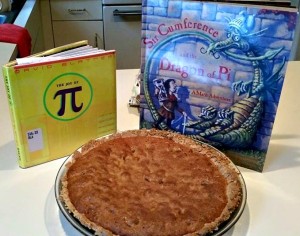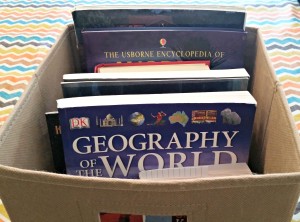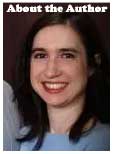Teaching With Living Books: A Tutorial
March 16, 2015
You often hear the term “living book” tossed around in homeschooling circles, but what makes a book “living”? Can it be subjective? What are spine books? Do we have to read only literature that was written over a hundred years ago? How can I use living books in my homeschool? Today, I want to explore these questions and discuss the nuts and bolts of educating our children with living books.
What is a Living Book and What Isn’t?
First, let’s talk about the definition. A living book is one that was written by one person who has a deep passion for the subject they are writing about. It’s a book that draws you into the story, expands your imagination, causes you to care about the subject or characters, and makes you think. A living book should enrich your life in some way, either by teaching you something new or expanding your point-of-view.
I’ve already expounded upon living books vs. twaddle in this article: A Literature-Based Education: Choosing Great Literature.
“For the children? They must grow up upon the best . . . There is never a time when they are unequal to worthy thoughts, well put; inspiring tales, well told. Let Blake’s ‘Songs of Innocence’ represent their standard in poetry DeFoe and Stevenson, in prose; and we shall train a race of readers who willdemand literature–that is, the fit and beautiful expression of inspiring ideas and pictures of life.” ~ Charlotte Mason
But what if a book that is deemed “twaddle” is your child’s favorite book? I had one child who devoured the entire Magic Tree House series when he was 6. These books would definitely fall under the definition of twaddle – more than 30 books in the series, very simply written and quite predictable. However, he was a reluctant reader and was wary of making the leap from beginner books like Frog and Toad and Little Bear to chapter books, and those books helped him cross that bridge. They also sparked his interest in a variety of topics, from Vikings to the Titanic. So while technically considered twaddle, they did hold merit for my child.
While some books are obvious twaddle (a Spongebob Squarepants picture book, for example), others might be just what your child needs at that particular moment in time. No one should be book-shamed because what they are reading may not be something that Charlotte Mason herself would have chosen for her students. However, I have always refused to read aloud twaddley books. If they want to read it in their free time, they are welcome to it. But if they want me to read to them, I will choose a better book. Free reading time should be just that — free for the child to read whatever they want. But something that tends to happen when a child is served a steady diet of beautiful literature: they lose their appetite for twaddle. Suddenly they’ll notice the bad grammar or stilted dialogue, and they’ll begin to choose better books all on their own.
But what about textbooks? What Are spine books?
With rare exceptions, textbooks are not living — they do not breathe life into a subject. They are often written by committee, and while they can sometimes be useful for research purposes, they tend to be very dry and boring. Textbooks typically focus on surface level information — names, dates, and definitions — without going very deeply into any one subject. Instead of textbooks, you’ll use spine books.
What is a spine book? A spine book will form the backbone or “spine” of your subject. It’s a book that you’ll use over the course of a semester or the full school year, and everything else within the subject will revolve around it. Living books aren’t limited to fiction. Non-fiction can be written with great literary quality, covering a wide variety of topics — biographies about historical figures or scientists, as well as other subjects within science, history, and geography.
How can I use living books in my homeschool?
 Now that we know what a living book is, let’s talk about how we can use them to educate our children. For some, a Charlotte Mason style living books education can feel scattered, maybe even disjointed. One reason for this is that when you educate this way, you’ll be reading several books at once and often covering a wide variety of topics. While that may seem overwhelming at first, let me assure you that it isn’t. Not when you consider the idea of short lessons.
Now that we know what a living book is, let’s talk about how we can use them to educate our children. For some, a Charlotte Mason style living books education can feel scattered, maybe even disjointed. One reason for this is that when you educate this way, you’ll be reading several books at once and often covering a wide variety of topics. While that may seem overwhelming at first, let me assure you that it isn’t. Not when you consider the idea of short lessons.
Charlotte Mason insisted on spending no more than 20 – 30 minutes on any single lesson for young children – no more than 45 minutes for an older student. That might not sound like enough time to devote to a subject, but the purpose of short lessons is to keep your child’s interest. You don’t want to turn into Ben Stein, droning on and on while your children fall into a stupor. Short readings keep their attention and ensure that they are getting the most out of the materials.
“As I have said, knowledge, that is, roughly, ideas clothed upon with facts, is the proper pabulum for mind. This food a child requires in large quantities and
in great variety. The wide syllabus I have in view is intended in every point to meet some particular demand of the mind.” ~ Charlotte Mason
Another factor that comes into play here is slow reading. If you happen to have a voracious reader, the idea of slow reading might seem absurd. But hear me out: When you take your time with a book and really savor it, you will live with the characters, ponder over the ideas, and have plenty of time to dwell within the pages of the book. When you live within a book for a little while, you will be able to suck all of the marrow from its bones. Your child will remember a book that was read slowly for a much longer time. I know the books we really lived in are the ones my children still talk about today. Not every book needs to be read slowly though — those “free reading” periods, where my children can pick whatever books they want, can be read at whatever pace they prefer. But books I have specifically chosen for educational purposes we take our time with and ruminate over.
So what does this look like in practice?
 Over the course of one school day, you may read a chapter from a history spine and add something to your timeline. Maybe you’ll also do a writing assignment, or an additional project pertaining to the topic being studied.
Over the course of one school day, you may read a chapter from a history spine and add something to your timeline. Maybe you’ll also do a writing assignment, or an additional project pertaining to the topic being studied.
Then you might read a chapter from a read aloud, possibly historical fiction that ties into the time period being studied, but often just a beautiful piece of literature. You’ll ask your child to narrate what they heard or copy a particularly interesting or lovely passage for their copywork.
Later you’ll enjoy a poem or three and maybe read about a scientist or a topic in your science study. Possibly you’ll work on an art project or study an artist who lived during the time period you are studying in history.
I like to divide my day so that we aren’t trying to do everything in one sitting. So, the mornings are devoted to math and language arts, with our current read aloud being our kick-off in the morning. I like to read aloud at meals because everyone is sitting down and occupied. (I either eat before or after.) Then before lunch, we’ll do our history or geography lesson, followed by a science or art lesson after lunch. Over the course of the day, we’ll read from our various books, covering a wide range of subject matter — from history to literature, poetry, and science, a variety of topics and subjects, but everything just flows together.
I like to line up books in such a way that they connect — not always, but often –and then allow my children to make those connections. Sometimes it’s serendipitous and unplanned, like the time we were studying WWII after having recently finished reading aloud the entire Harry Potter series, and one of my children had the epiphany that what Voldemort and the Death Eaters were doing to the Muggle-born witches and wizards was similar to what Hitler and the Nazis had done to the Jews. Children should make their own connections — relationships between subjects and books being read. This is when the material they are studying will really stick in their mind. It’s real learning that happens when a child soaks up engaging literature, history, and science lessons; when they have time to ponder over the ideas they have been reading. This is when connections are made and that learning sticks because they made the discovery themselves.
Another thing to note — you don’t need to do every subject every day. Maybe Mondays and Wednesdays we’ll have a history lesson, and Tuesdays and Thursdays we’ll do science. I like to save anything especially fun for Fridays. It’s just a nice way to end the week, so that’s when we’ll often do our art projects or science experiments. Do what works best for your family! You may find that it’s easiest to do all of your reading in the evenings, rather than broken up throughout the day. Or maybe your child likes to have the final say in which order they do their lessons.
“Our business is to give him mind-stuff, and both quality and quantity are essential. Naturally, each of us possesses this mind-stuff only in limited measure, but we know where to procure it; for the best thought the world possesses is stored in books; we must open books to children, the best books; our own concern is
abundant provision and orderly serving.” ~ Charlotte Mason
Living books can be the foundation for a beautiful and rich education. It will give your child a feast of ideas, heroes and heroines to emulate, a richer vocabulary, and provide a wide and varied education. These books will bring delight to your child, filling their mind with the best of the best.
You can read more about giving your child a literary education in these articles:
- The Most Important Thing
- A Literature-Based Education: Choosing Great Literature
- The Importance of Reading Aloud
- Homeschooling: Keeping It Simple
- Educational Problems: The Habit of Reading
If you want to give your child a literary education, check out Build Your Library’s full year curriculum guides – Kindergarten – Grade 1 – Grade 2 – Grade 3 – Grade 4 – Grade 5 – Grade 6 – Grade 7 – Grade 8 – Grade 9 – Grade 10 – Grade 11 – Grade 12 – – as well as our wide variety of literature based Unit Studies.
 Emily Cook is the author and creator of the secular homeschool curriculum Build Your Library, a literature-based K-12 program infused with the teachings of Charlotte Mason. She writes full year lesson plans as well as shorter topical unit studies. Emily has been homeschooling her four children in Southern NH for 21 years. She is passionate about reading aloud to children of all ages and loves to share her love of literature with others. She and her family also makes incredibly dorky videos about homeschooling, books and more on Youtube at ARRRGH! Schooling. You can follow her on Facebook, Twitter and Pinterest.
Emily Cook is the author and creator of the secular homeschool curriculum Build Your Library, a literature-based K-12 program infused with the teachings of Charlotte Mason. She writes full year lesson plans as well as shorter topical unit studies. Emily has been homeschooling her four children in Southern NH for 21 years. She is passionate about reading aloud to children of all ages and loves to share her love of literature with others. She and her family also makes incredibly dorky videos about homeschooling, books and more on Youtube at ARRRGH! Schooling. You can follow her on Facebook, Twitter and Pinterest.
